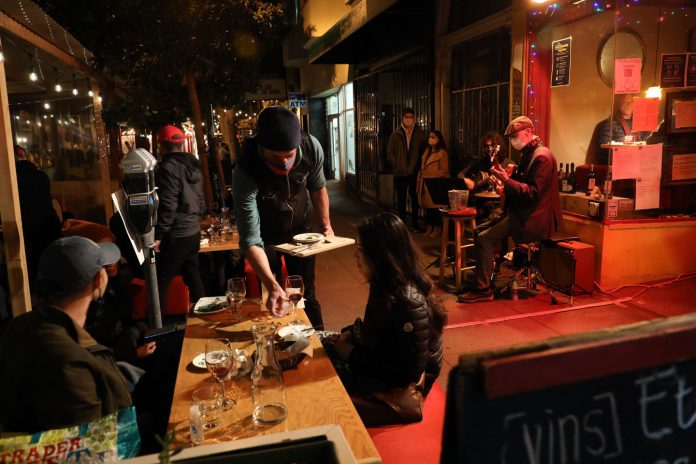
Last week, President Joe Biden signed into law a wide-reaching $1.9 trillion stimulus package aimed at throwing a lifeline to Americans struggling through the pandemic.
In California, the news has come as a particular relief.
Many businesses here have been closed or restricted for a year. Children have been learning from home, and mothers have borne a disproportionate burden caring for them. Essential workers have been reporting to their jobs without a guarantee that they’d be able to take time off if they or a family member got sick.
The pot of stimulus money going to the state government, $26 billion, was so large that officials here were put on the defensive after they revised the state’s budget projection at the beginning of the year. They had been expecting a daunting $54 billion deficit last year. Instead, state officials in January projected a $15 billion surplus.
But officials have emphasized that the surplus is essentially already accounted for, because of various state-funded relief programs.
And for Californians, the economic pain will be lasting — and federal aid is necessary.
“Don’t equate where we are on a revenue basis with where we are on an economy basis,” said H.D. Palmer, a deputy director of the state’s Department of Finance. “It is going to take us at least two years, if not longer, for us to get back to prepandemic employment levels.”
California lost a record of 1.6 million jobs, and while the state government has fared better than expected, cities have been facing difficult shortfalls, thanks to the state’s tax structure, as my colleague Vindu Goel wrote recently.
And, of course, California has by far the most residents of any state, which means that Californians will, in aggregate, receive lots of direct aid.
Overall, the Department of Finance estimated that California would receive more than $150 billion, including money that will go to state and local governments, as well as directly to families, businesses and other entities.
Here’s a look at where some of that money is projected to go:
$40 billion: That’s how much, collectively, Californians are expected to get in the $1,400 stimulus payments. (They’re already being deposited.)
$30 billion: That’s how much Californians are expected to get in additional unemployment insurance benefits.
$16 billion: That’s the amount that is expected to be split between city and county governments to help make up for lost local tax revenue during the pandemic. And that’s what pays for essential services like law enforcement and firefighters. The money can also be used for water, sewer and broadband infrastructure projects.
$15.9 billion: That’s how much is expected to go to California’s grade schools to help them safely reopen, including by purchasing protective equipment, improving buildings, increasing transportation capacity and reducing class sizes.
$5 billion: That’s how much could go to California colleges.
$4 billion: That’s how much California’s transit agencies, which have been facing doomsday scenarios, are expected to get.
$3.9 billion: That’s how much of the $40 billion that the bill set aside for child care in total is expected to come to California.
$3.8 billion: That’s about how much, total, is expected to go to emergency rental assistance, as well as utility payments, food assistance and other safety net programs besides unemployment insurance.
$550 million: The full federal bill includes $10 billion for capital projects, or big investments that will help make work, education and public health monitoring easier. Each state is set to get $100 million, plus additional money according to a formula based on population.
$300 million: That’s how much the state is expected to get to help expand vaccination efforts. And that’s in addition to the FEMA mass vaccination sites that are already running.
Copyright 2021 The New York Times Company













